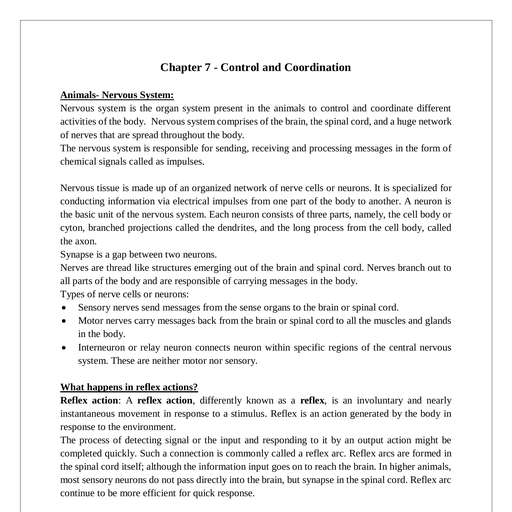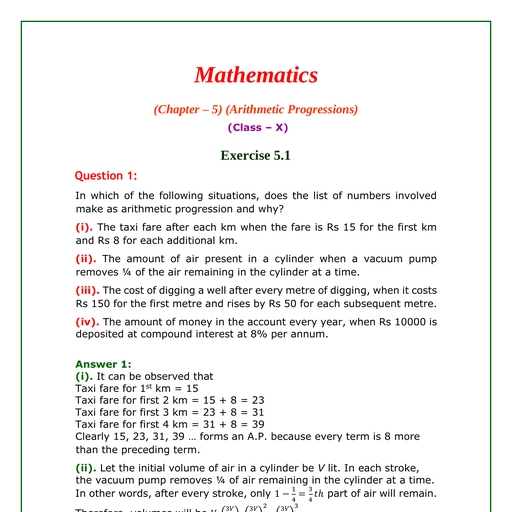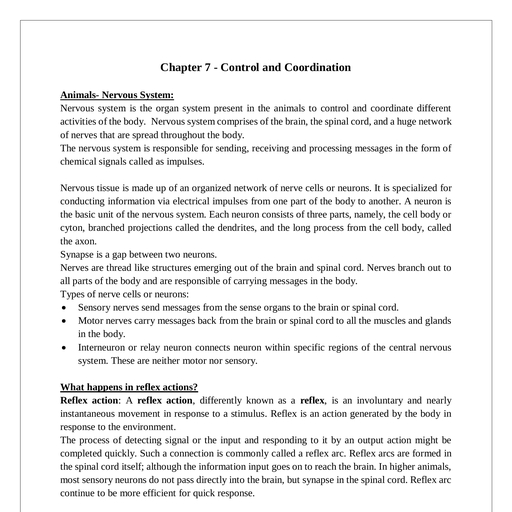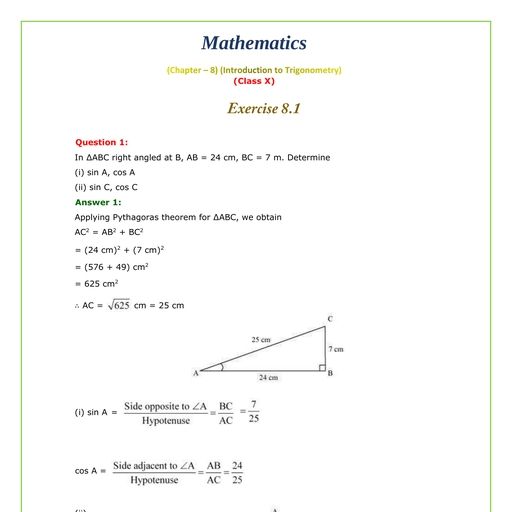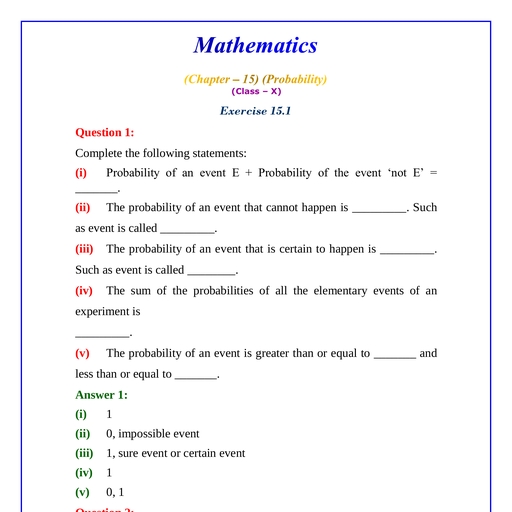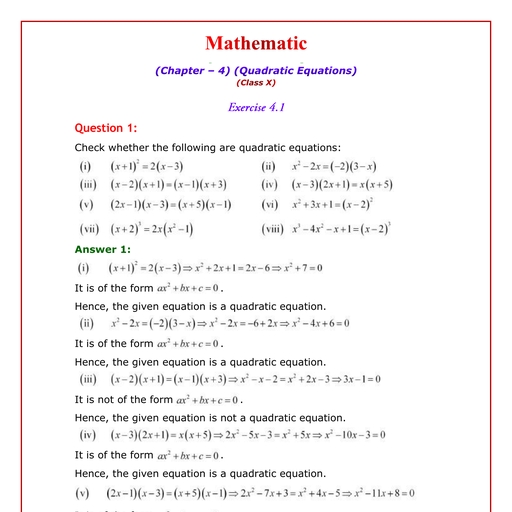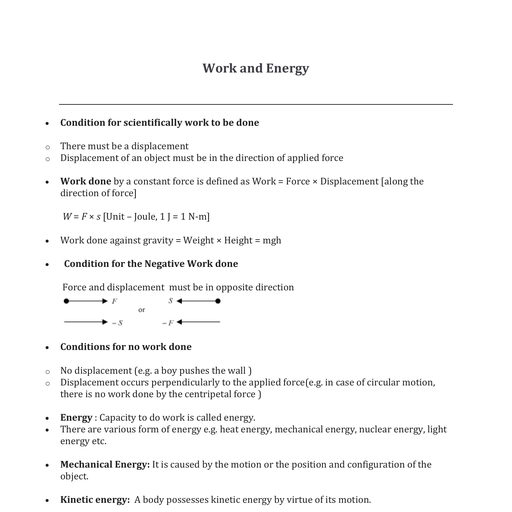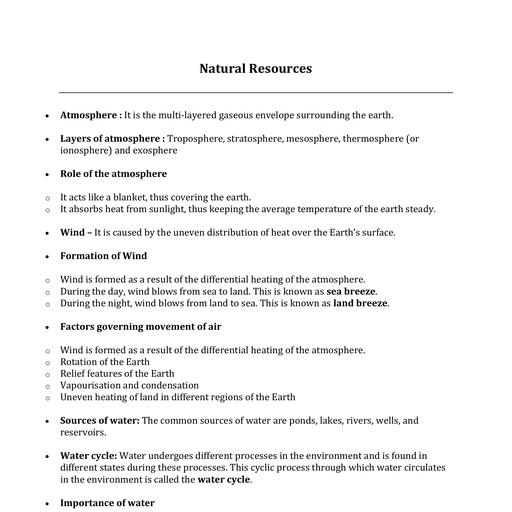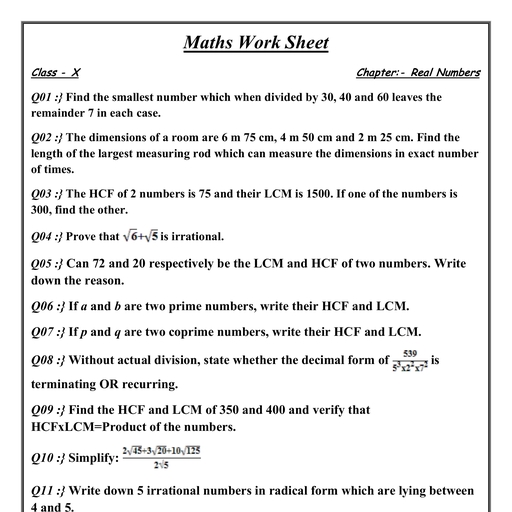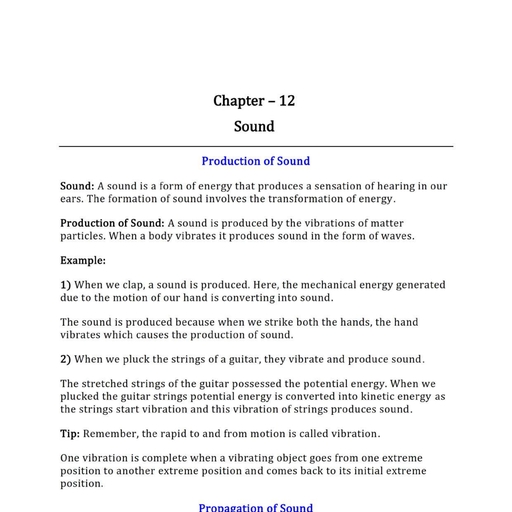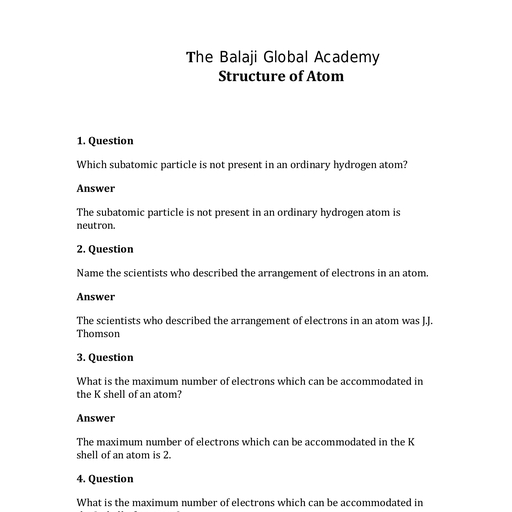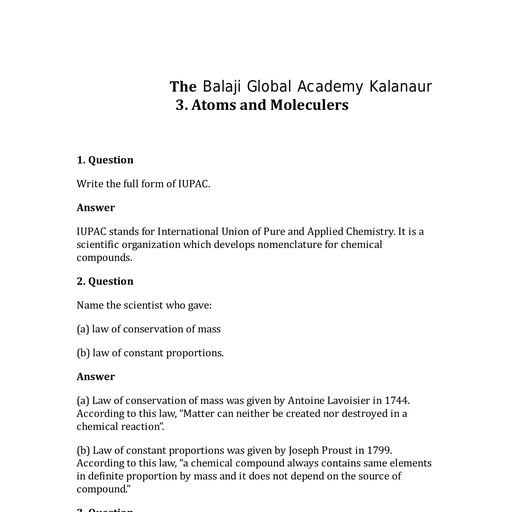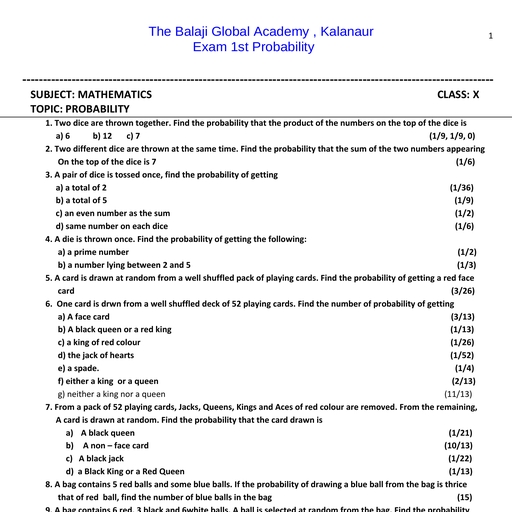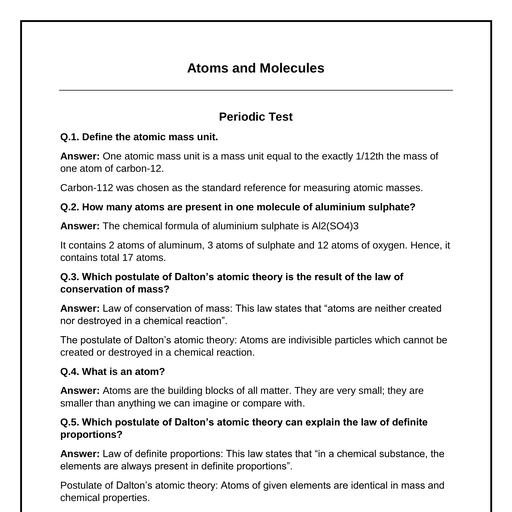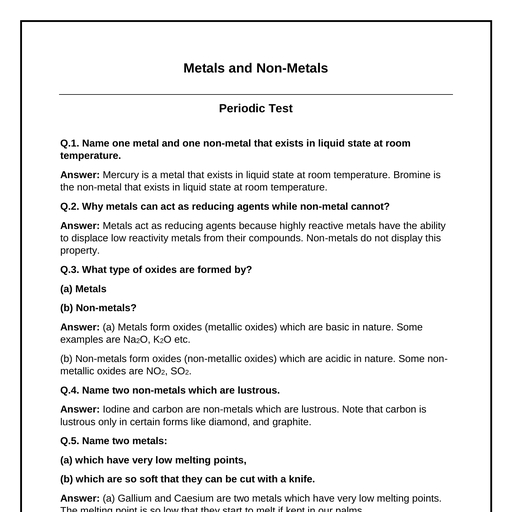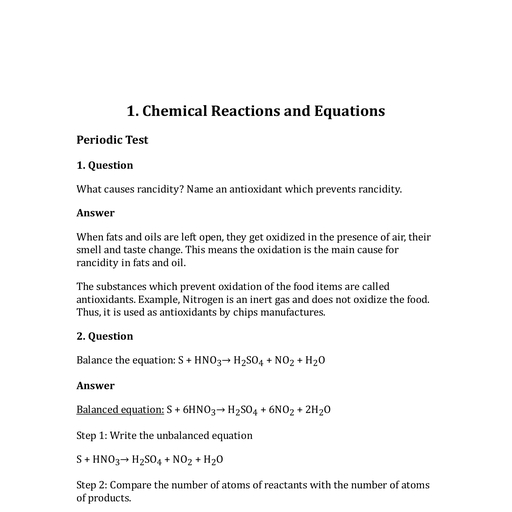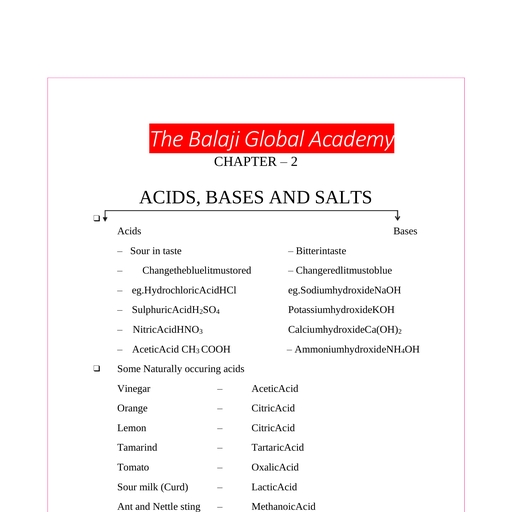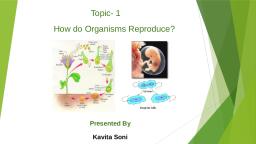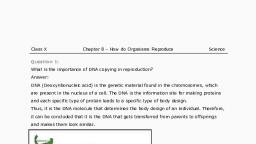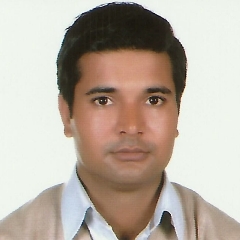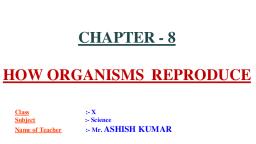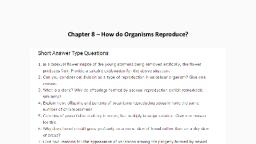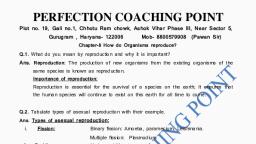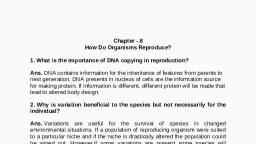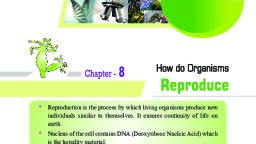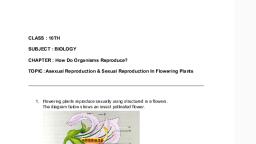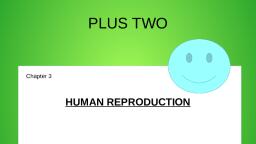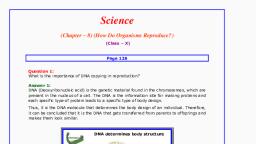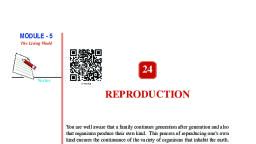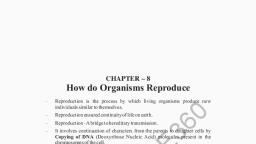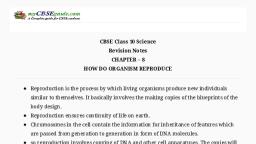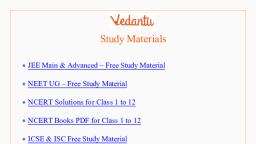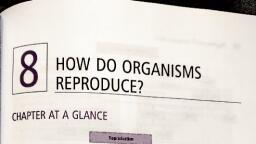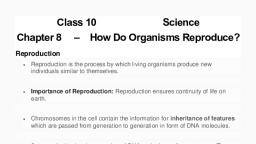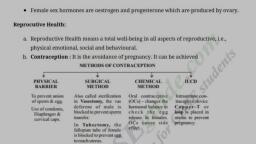Page 1 :
CHAPTER – 8, , How do Organisms Reproduce, –, , Reproduction is the process by which living organisms produce new, individuals similar to themselves., , –, , Reproduction ensured continuity of life on earth., , –, , Reproduction - A bridge to hereditary transmission., , –, , It involves continuation of characters from the parents to daughter cells by, Copying of DNA (Deoxyribose Nucleic Acid) molecules present in the, chromosomes of the cell., , –, , Copying of DNAs is also not a foolproof exercise, even minute changes bring, about Variation in the blue print of the offsprings., , –, , The useful variations are retained while the harmful one does not go beyond., , –, , Actually variations help the species to withstand drastic environmental, changes, thus save the species from becoming extinct and promotes its, survival for a longer time., , –, , This inbuilt tendency of variation is the "fuel" for Evolution., REPRODUCTION, , Asexual Reproduction, 1. A single parent is involved, , Sexual Reproduction, 1. Both Parents involved, , 2. Gametes not formed, , 2. Gametes are formed, , 3. Progeny is Identical to parent, , 3. Progeny is only genetically, similar to the parent., , eg. Fission in Amoeba, –, , Asexual Reproduction is extremely useful as a mean of rapid multiplication., It is common in lower plants and animals., , –, , Different form of Asexual Reproduction., 1. FISSION : the parent cell divides/splits into two daughter cell-Binary, Fission; splits into many cells-multiple Fission, , 72, , X-Science
Page 2 :
2. BUDDING : A new organism is produced as an outgrowth of the parent, body part., , 3. Spore Formation : Spores are, small, bulb like structure develops, at the top of the erect hyphae of the, fungus plant, released into the air, and germinate, into new, individuals after landing into food, or soil., , 4. FRAGMENTATION : It is the accidental process when the broken pieces, of an organism (fragments) grows into a complete organism., eg. fragmentation in, spirogyra, , 73, , X-Science
Page 3 :
5. REGENERATION : When the simple animals like Hydra Planaria, develop a new individual from their broken older part it is known as, regeneration. It is carried out by specialised cells which grow large numbers, of cells., , VEGETATIVE PROPAGATION :, A mode of reproduction in which part like the stem, root, leaves develop into new, plant under favourable conditions., Benefits, 1., , Plants can bear flowers, fruits earlier than those produced from seeds., , 2., , Growing Banana, orange, rose, jasmine that have lost the capacity to produce, seeds., , 3., , Genetical similarity is maintained in the plants., eg. Sugarcane, rose, grapes by layering or grafting., , SEXUAL REPRODUCTION, When reproduction takes place as a result of fusion between two gamets, one from, each parent, it is called sexual reproduction., –, , This process of fusion between two gamets is called fertilization., , –, , The formation of gamets involves exchange of chromosomal (genetic), fragments between homologous chromosomes causing genetic, recombination which leads to variation., SEXUAL REPRODUCTION IN PLANTS, , It occurs mostly in flowering plants. In fact flowers are the reproductive organ of, plants., 74, , X-Science
Page 4 :
FLOWERS, Bisexual Flowers, Both male and female, reproductive part i.e., stamen &, carpel present., , Unisexual Flowers, Either male or female, reproductive part is present., Eg. Papaya, Watermelon, , Eg. Hibiscus, mustard, , A typical flower consists of four main whorls namely calyx (sepals), Corolla, (Petals), Androecium (Stamens) and Gynoecium (Carpels)., Reproductive Part of Flower, STAMEN, (male part, Filament, , (2n), Anther, MEIOSIS, (n) Pollen grain, (male gamet), , CARPEL, (female part), Style, Stigma, Ovary, (2n), Egg cell (ovule) [n], , –, , Pollen grains of a flower transfer to stigma of the carpel of the same flower, (Self-Pollination) or to the carpel of the another flower (Cross-Pollination)., , –, , This transfer of pollens is achieved by agent like wind, water or animals., , –, , After Pollination, the pollen grains reach to the egg cell in the form of a pollen, tube., , 75, , X-Science
Page 5 :
–, , Fertilization : The fusion between the pollen grain and female egg cell. It, occurs inside the ovary. Zygote is produced in this process., , –, , Zygote divides several times to form an embryo within the ovule. The ovule, develops a tough coat and is converted into a seed., , –, , Ovary grows rapidly and ripens to forms a fruit, while the seed contains the, future plant or embryo which develops into a seedling under suitable, condition. This process is known as Germination., REPRODUCTION IN HUMAN BEINGS, , –, , Humans use a Sexual Mode of reproduction., , –, , It needs sexual maturation which includes creation of the germ cells ie, egg, (ova) in the female and sperm in the male partener & this period of sexual, maturation is called Puberty., , –, , Human beings have a well developed male and female reproductive system., , –, , The formation of male germ cell (sperms) takes place in the testes (male, reproducture organ), , –, , Actually a pair of testes are located inside scrotum situated outside the, abdominal cavity. It is meant to keep relatively a low temperature needed for, the production of sperms by testes., , –, , Moreover testes release a male sex hormone called testosterone whose, function is to:, 1. Regulate the production of sperm, 2. Brings about changes in appearance seen in boys at the time of puberty., 76, , X-Science
Page 6 :
–, , The sperms along with the secretion of prostate gland and seminal vesicle,, together constitute semen, which is released and made to enter into the female, genital tract during Copulation., FEMALE REPRODUCTIVE SYSTEM, , ?, The female germ cells or eggs are made in the ovaries, a pair of which is, located in both side of abdomen., ?, When a girl is born, the ovaries already contain thousands of immature eggs., ?, At the puberty, some of these Eggs start maturing. One egg is produced every, month by one of the ovaries., ?, The Egg is carried from the ovary to the womb through a fallopian tube. These, two fallopian tube unite into an elastic bag like structure known as Uterus., ?, The Uterus opens into the vagina through the cervix., ?, Fertilization occurs in the fallopian tube of female genital tract., ?, The fertilized egg also called zygote (2n) gets implanted in the lining of the, , Uterus, and start dividing. Actually uterus is richly supplied with blood to, nourish the growing embryo. If zygote is not formed, the inner wall of uterus, breaks which causes bleeding through vagina. This process is called, MENSTRUATION. It occurs at a regular interval of 28 days., ?, The Embroyo gets nutrition fromthe mother's blood with the help of a special, , tissue called PLACENTA. It provides a large surface area for glucose and, oxygen to pass from the mother to the embryo. Similarly the wastes from, developing embryo are removed to mother's blood through placenta., ?, The child is born as a result of rhythmic contractions of the muscles in the, , uterus. after Nine months (36 weeks) of development inside mother's womb., It is also called Gestation Period., 77, , X-Science
Page 7 :
The sexual cycle in a woman continues upto the age of 45 to 50 years. After, that the ovary do not release egg. This stage is called Menopause. It a also, marks the end of menstruation in the woman., REPRODUCTIVE HEALTH, ?, Reproductive Health means a total well-being in all aspects of reproductive,, , ie., physical emotional, social and behavioural., ?, Contraception : It is the avoidance of pregnancy. It can be achieved by, , Methods of contraception, PHYSICAL, BARRIER, To prevent union of, sperm & egg., Use of condoms,, Diaphragm & cervical, caps., , SURGICAL, METHOD, Also called sterilization, in Vasectomy, the vas, deferens of male is, blocked to prevent, sperm transfer., In Tubectomy, the, fallopian tube of female, is blocked to prevent, egg to reach uterus., , CHEMICAL, METHOD, Oral contraceptive, (OCs) - changes the, hormonal balance to, check the egg release in, females. OCs cause side, effect., , Copper-T or loop is, placed in uterus to, prevent pregancy., ?, Healthy society needs a balanced sex ratio that can be achieved by educating, , the people to avoid malpractices like female foeticide & pre-natal sex, determination., Sexually Transmitted Disease (STDs), VIRAL STDs, Eg. H.I.V. - AIDS, Warts, , Bacterial STDs, Eg. Syphilis &, Gonorrhoea, , STDs are communicated during unsafe sexual contact., , 78, , X-Science
Page 8 :
EXERCISE, (Question Bank), 1., , Where is the DNA present in the cell?, , 2., , What is bisexual/hermaphrodite?, , 3., , Write suitable condition necessary for seed germmration., , 4., , Write the function of the secretion of seminal vesicle and prostate gland., , 5., , Name the part of female body in which the egg is fertilized., , 6., , Name the chemical method to prevent the pregnancy., , 2 Marks, 7., , What is importance of DNA copying in reproduction., , 8., , Why is variation beneficial to the species but not necessarily for the, individual?, , 9., , Why is vegetative propagation practised for growing some types of plants?, , 10., , Name any two STDs. What measures can you suggest to prevent them., , 11., , Distinguish between male & female gamete., , 12., , Write two important function of testosterone., , 13., , What is placenta. Also write its two functions?, , 14., , Draw a well labelled diagram of human female reproductive system., Explain the menstrual cycle of female., , 15., , Draw a labelled diagram to explain the fertilization in the higher plant., , 79, , X-Science

